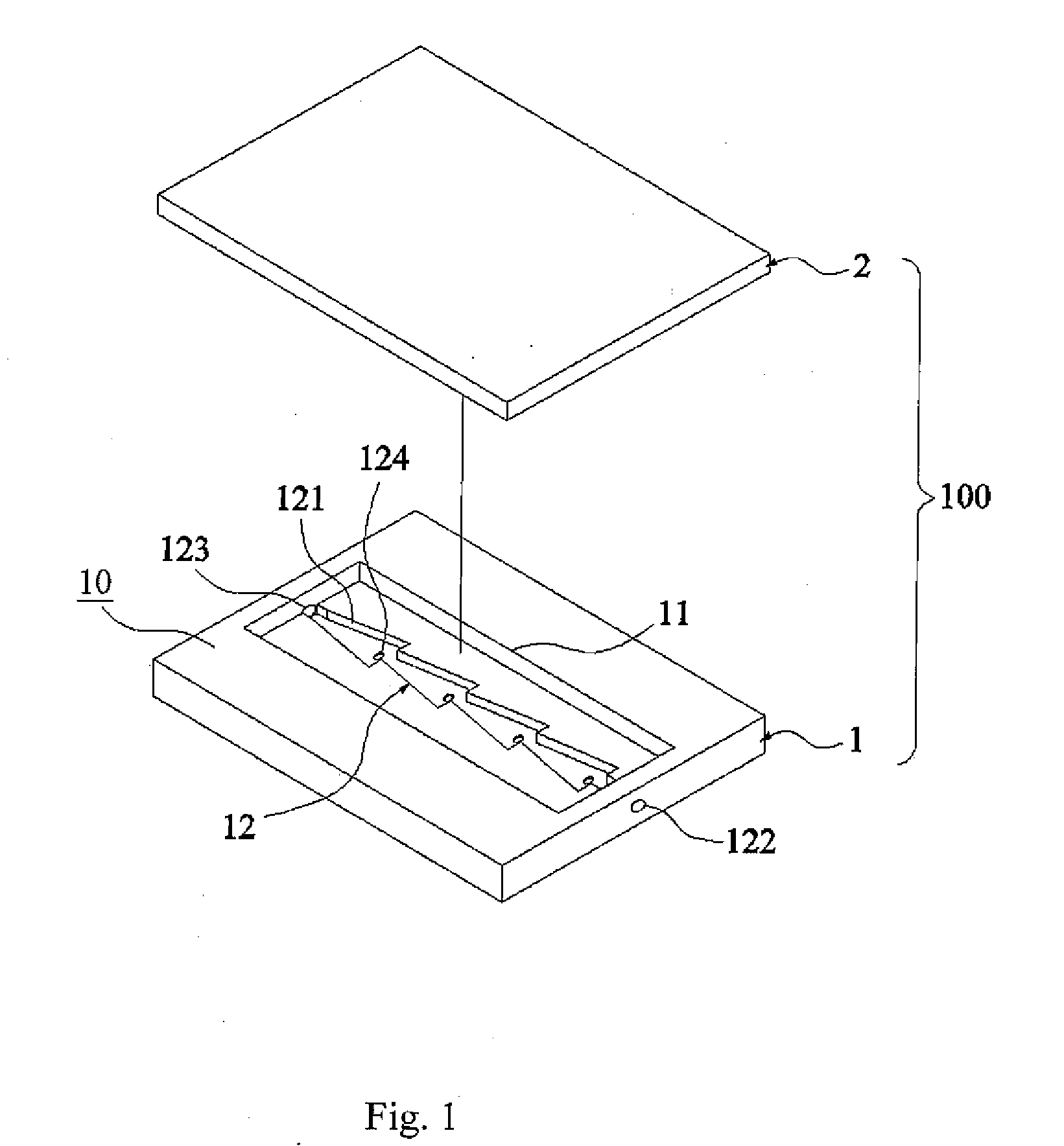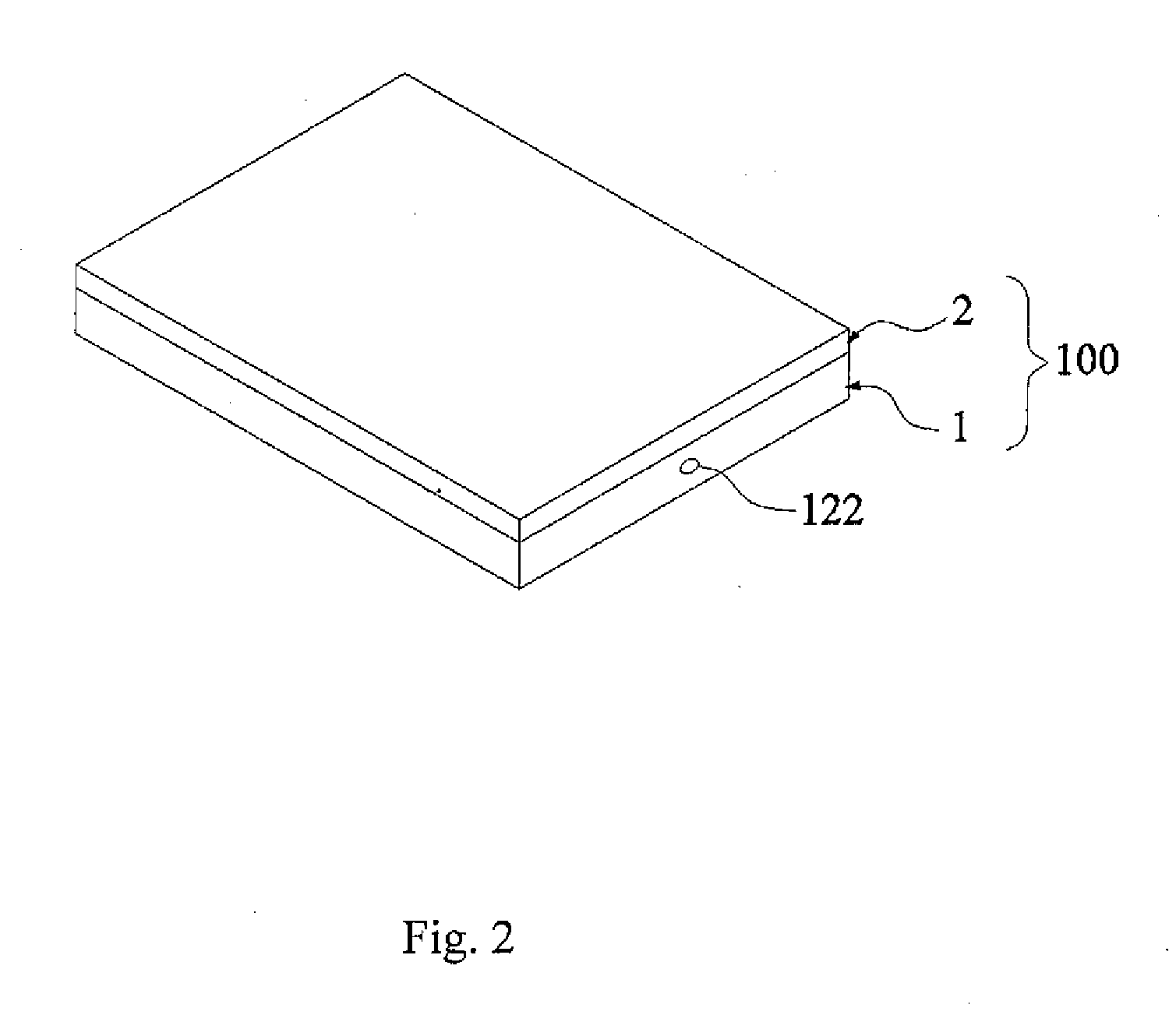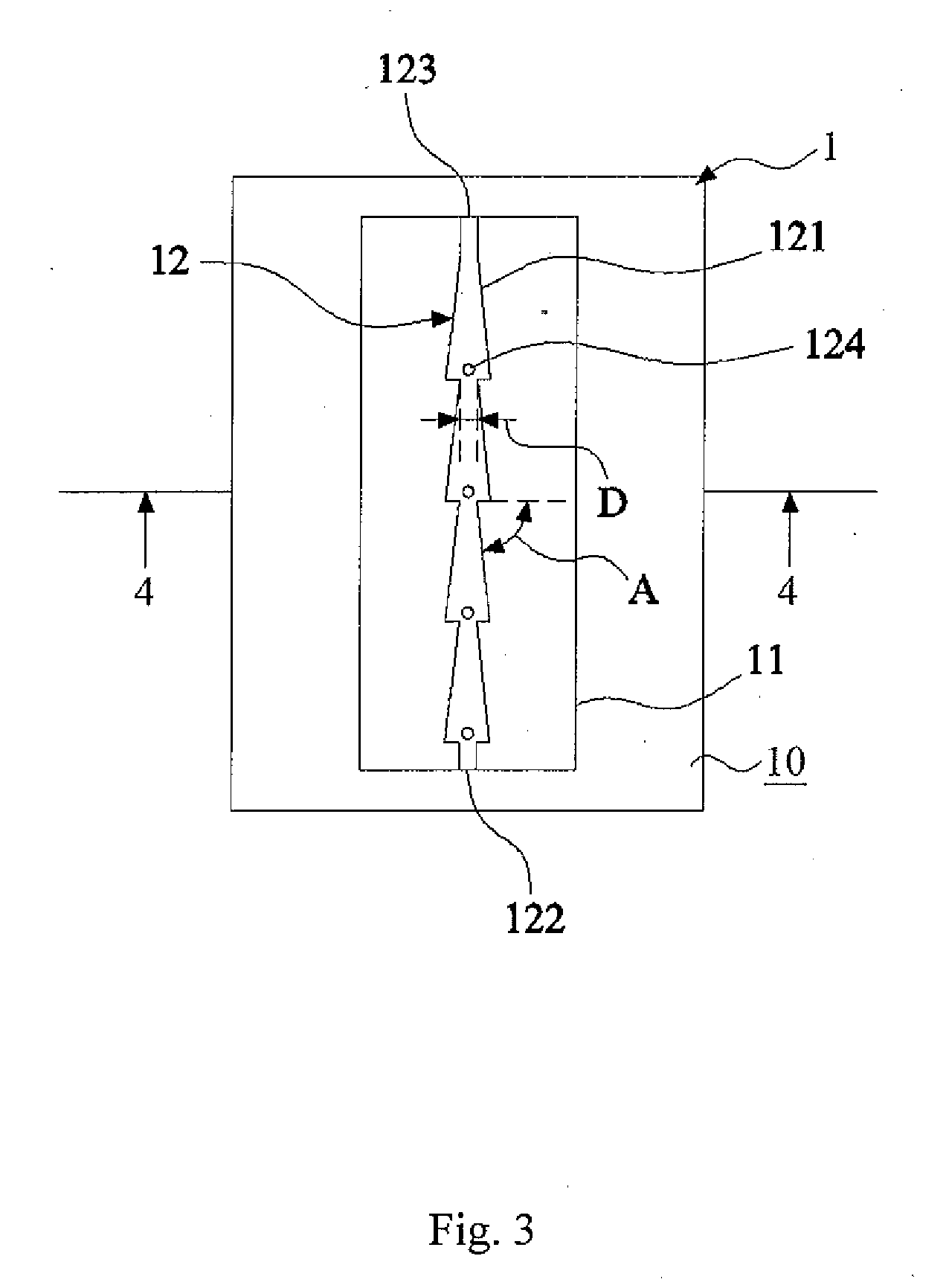Microfluidic Chip and Method Using the Same
a microfluidic chip and microfluidic technology, applied in the field of tissue culture devices, can solve the problems of liver tissue cells dying, fresh medium cannot be efficiently diffused into liver tissues, and inability to efficiently culture liver tissues, etc., and achieve the effect of efficiently culture tissues in vitro
- Summary
- Abstract
- Description
- Claims
- Application Information
AI Technical Summary
Benefits of technology
Problems solved by technology
Method used
Image
Examples
embodiment 1
[0041]With reference to FIG. 1-FIG. 2, FIG. 1 is an exploded view showing the first embodiment of the present invention, and FIG. 2 is an assembly view corresponding to FIG. 1, In the first embodiment, microfluidic chip 100 is adapted to input and output a medium having a predetermined net flow speed so as to culture a tissue in vitro. As shown in figures, microfluidic chip 100 comprises a substrate 1 and a top cover 2. The substrate 1 is composed of polymethylmethacrylate (PMMA). The top cover 2 is adapted to cover the substrate 1.
[0042]The substrate 1 has a surface 10, and a tissue culture area 11 is formed on the surface 10 of the substrate 1 (It is exemplified in this embodiment by, but not limits to, only one tissue culture area). The tissue culture area 11 has a microfluidic channel 12 formed by a plurality of connected geometrical structures 121 having a predetermined depth. The microfluidic channel 12 has an inlet 122 and an outlet 123 at two ends thereof for inputting the m...
embodiment 2
[0045]With reference to FIG. 5, which is a top view showing the substrate of the second embodiment of the present invention. In this embodiment, the substrate 1a has three tissue culture areas 11a, 11b and 11c, serially connected to form a one-dimensional array 14. The array 14 has an inlet 141 and an outlet 142 at two ends and two side channels 15a, 15b formed thereon. One end of side channels 15a is connected to inlet 141 of array 14, and the other end is connected to the section between tissue culture areas 11b and 11c. Similarly, one end of side channels 15b is connected to inlet 141 of array 14, and the other end is connected to the section between tissue culture areas 11a and 11b.
embodiment 3
[0046]With reference to FIG. 6 and FIGS. 7A-7F. FIG. 6 is a flow chart of the third embodiment of the present invention, and FIGS. 7A-7F are schematic views corresponding to the steps of FIG. 6. In this embodiment, a method for culturing tissue in vitro utilizing the foregoing microfluidic chip is provided. The method comprises the steps described as follow:
[0047]Step 101: Providing a polymer membrane 13 being cultured with a plurality of mesothelial cells C thereon. As shown in FIG. 7A, a plurality of mesothelial cells C are cultured on the polymer membrane 13 composed of PDMS. Clinical experiments indicate that mesothelial cells are capable of secreting some particular proteins which are helpful for culturing liver tissues. Based on this reason, mesothelial cells are cultured on the polymer membrane, so that the contact area between mesothelial cells and liver tissue can be increased, and the tissue may obtain more required proteins.
[0048]Step 102: Attaching the polymer membrane 1...
PUM
| Property | Measurement | Unit |
|---|---|---|
| angle | aaaaa | aaaaa |
| angle | aaaaa | aaaaa |
| angle | aaaaa | aaaaa |
Abstract
Description
Claims
Application Information
 Login to View More
Login to View More - R&D
- Intellectual Property
- Life Sciences
- Materials
- Tech Scout
- Unparalleled Data Quality
- Higher Quality Content
- 60% Fewer Hallucinations
Browse by: Latest US Patents, China's latest patents, Technical Efficacy Thesaurus, Application Domain, Technology Topic, Popular Technical Reports.
© 2025 PatSnap. All rights reserved.Legal|Privacy policy|Modern Slavery Act Transparency Statement|Sitemap|About US| Contact US: help@patsnap.com



